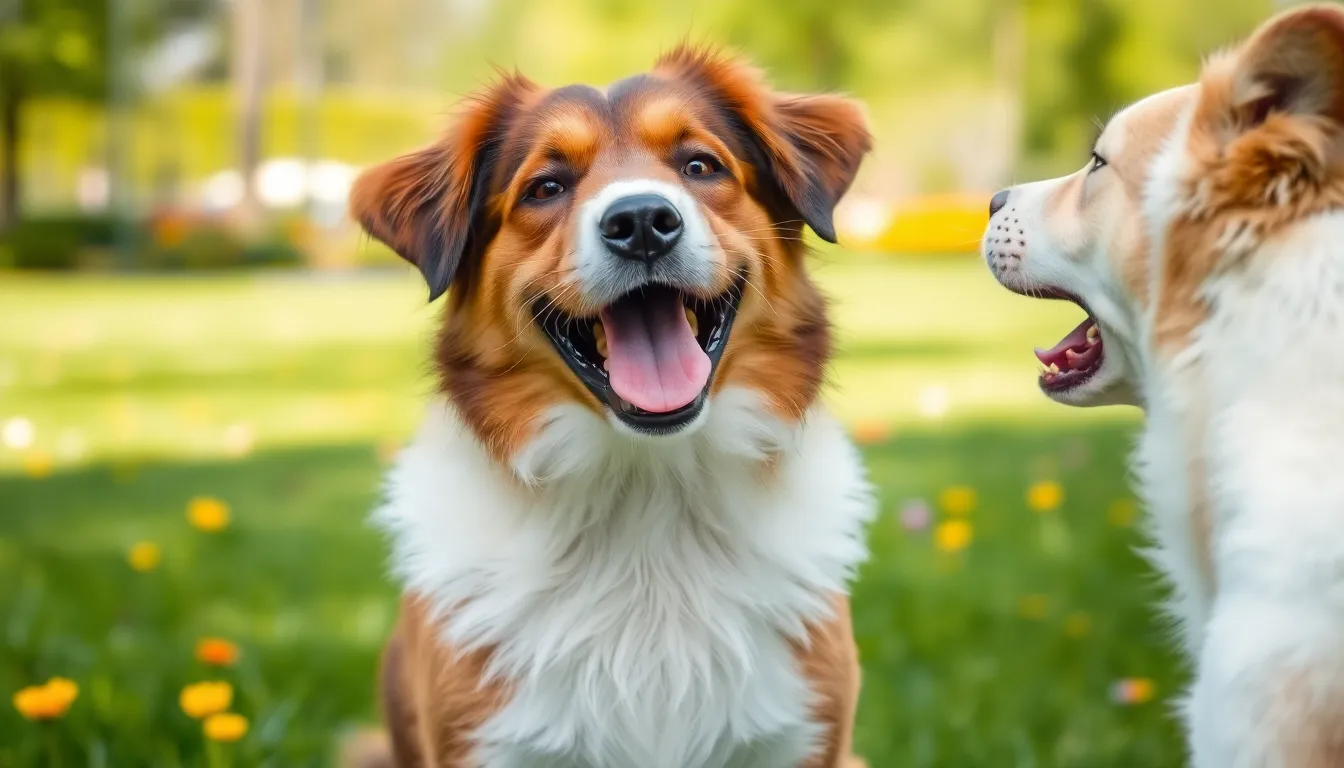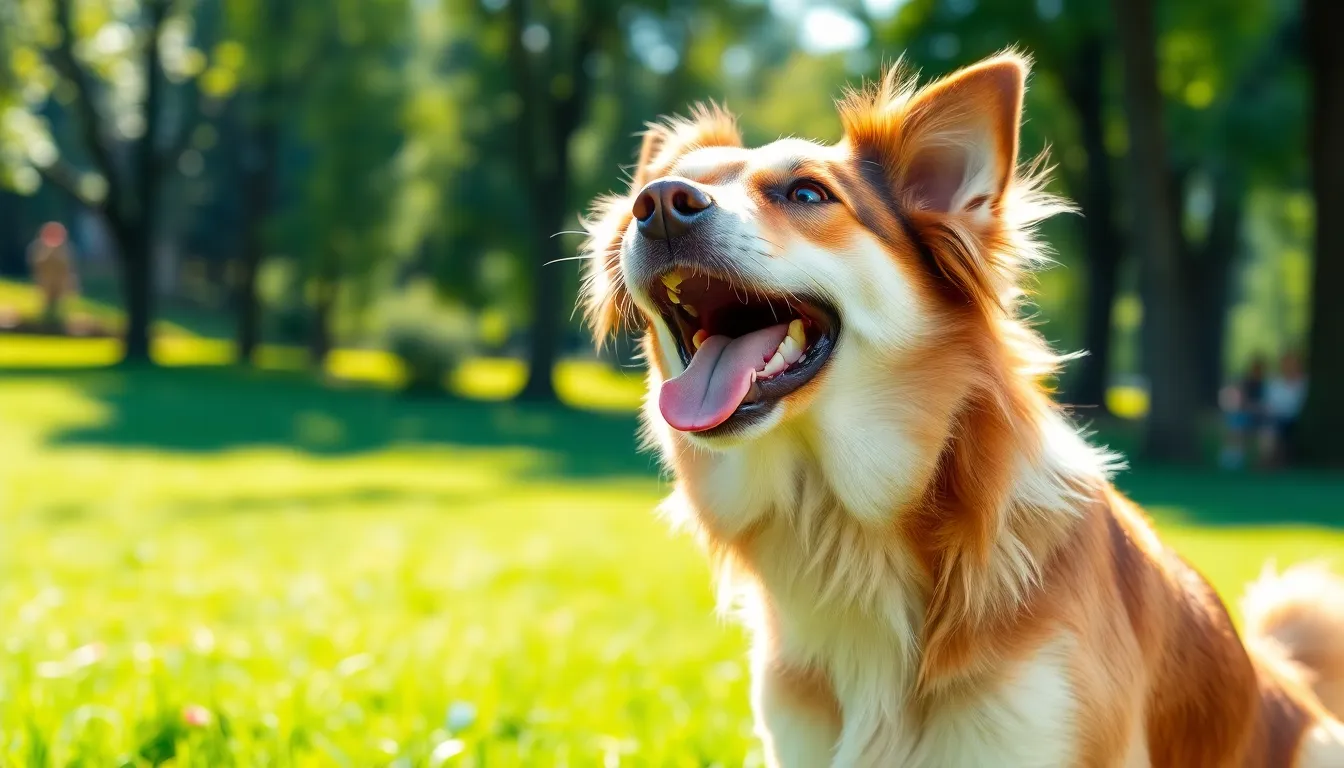Ever watched your dog burst into a fit of sneezes during playtime and wondered what on earth is going on? It’s not just a quirky canine quirk; it’s a fascinating glimpse into their world of excitement. When dogs get excited, their bodies often react in unexpected ways, and sneezing is one of those delightful surprises.
Table of Contents
ToggleUnderstanding Dog Behavior
Dogs often express excitement through various behaviors, including sneezing. This reflex sometimes occurs during play or social interactions. Sneezing serves as an invitation to engage, signaling to other dogs that they mean no harm.
Different factors can trigger sneezing in dogs. Overstimulation, for instance, arises during highly energetic play sessions. In these scenarios, the dog’s body responds by sneezing. Such sneezes are distinct from those caused by allergies or illnesses.
Communication plays a critical role in canine behavior. Dogs use sounds and body language to convey emotions. A sneeze, among other behaviors, can signal thrill and companionship during activities. Observing how dogs interact will reveal their feelings and intentions more clearly.
Understanding the underlying reasons for sneezing can enhance the bond between dogs and their owners. Recognizing that a sneeze during excitement is normal behavior encourages positive reinforcement. Owners can respond to sneezes with affection and play, strengthening their relationship.
Responses vary when dogs sneeze. Some dogs may hop and wag their tails, while others might spin in circles. Each dog’s reaction provides insight into their level of excitement and willingness to play. Knowing these cues helps owners engage effectively with their pets.
In essence, sneezing during moments of joy is a natural behavior for dogs. This reaction doesn’t indicate distress but rather an exuberant expression of happiness. Appreciating this nuance in dog behavior fosters better communication and understanding between humans and their canine companions.
Reasons For Sneezing

Dogs often sneeze due to various factors, particularly when they’re excited. Understanding these reasons can clarify their behavior during playful moments.
Physical Exertion
Physical exertion during play can stimulate sneezing. Rapid movements, excited barks, and vigorous activities increase airflow in the nasal passages. This surge can lead to involuntary sneezing as a response to heightened energy levels. Often, dogs sneeze while playing with other dogs or when engaging in their favorite activities. Such sneezes signify enjoyment rather than distress. Recognizing this behavior reinforces the joy dogs experience while they engage in play and interaction.
Allergens and Irritants
Allergens and irritants also trigger sneezing in dogs. Dust, pollen, or strong odors can lead to nasal irritation. Environmental factors play a significant role in causing these reactions. A dog might sneeze after coming indoors or when exposed to new flowers during a walk. Sneezing caused by these factors differs from sneezing triggered by excitement. It’s essential to monitor a dog’s environment for potential allergens to maintain their comfort and well-being.
The Connection Between Excitement and Sneezing
Dogs often exhibit sneezing when they feel excited, reflecting their joyful state. This behavior highlights the link between emotions and physiological responses in canines.
How Emotions Impact Dogs
Emotions significantly influence dogs’ behaviors and reactions. Excitement triggers various physical responses, including sneezing. Increased adrenaline during playtime stimulates the respiratory system, which can lead to sneezing. Dogs express their feelings through body language and vocalizations, sneezing included. This response serves as a way for them to communicate their enjoyment and eagerness to engage further. Understanding this connection helps owners respond appropriately to their pets in exciting situations.
Signs of Excitement in Dogs
Excited dogs display several recognizable signs. They may wag their tails vigorously, bark with enthusiasm, or leap around energetically. Body posture also changes, with many dogs appearing more animated and alert. Ears perked up typically indicate a heightened sense of awareness. Sneezing occurs alongside these behaviors, reinforcing their joyful state. Recognizing these signs enhances the interaction between dogs and their owners, fostering deeper connections during play. By interpreting these cues accurately, owners can create a more engaging and enjoyable environment for their pets.
When to Be Concerned
Sneeze behavior during excitement typically raises few concerns. However, certain conditions warrant attention. Observe for excessive sneezing beyond playful moments. Frequent, uncontrolled sneezing may indicate an underlying issue.
Watch for additional symptoms like coughing or nasal discharge. These signs suggest possible allergies or respiratory conditions. Allergens such as pollen, mold, or dust can irritate a dog’s nasal passages. If a dog shows these symptoms, consulting a veterinarian becomes crucial.
Consider the health history of the dog. Sudden changes in behavior may signal discomfort due to illness or stress. Monitor for shifts in eating habits or energy levels. A significant drop in playfulness also raises red flags.
Environmental factors can contribute to sneezing. Strong odors, smoke, or chemicals might irritate a dog’s nose. If sneezing persists after removing potential irritants, further evaluation is advisable.
Consult a vet if a dog exhibits signs of distress during sneezing. Gasping or wheezing requires immediate professional attention. Preventative measures include keeping the living area clean to minimize allergens.
Ultimately, understanding when to worry helps ensure a dog’s well-being. Pet owners benefit from maintaining awareness of behaviors that could indicate health problems beyond typical excitement-related sneezing.
Dogs sneezing when excited is a fascinating aspect of their behavior that showcases their joyful nature. This quirky response not only indicates their eagerness to engage but also serves as a unique form of communication among them. Recognizing the difference between excitement-induced sneezing and other causes is essential for every dog owner.
By paying attention to their dog’s sneezing patterns and accompanying behaviors, owners can strengthen their bond and create a more enjoyable playtime experience. Understanding these signals ensures that pet owners can respond appropriately and maintain their dog’s well-being. Keeping an eye on potential irritants and knowing when to seek veterinary advice further enhances a dog’s comfort and happiness during play.




